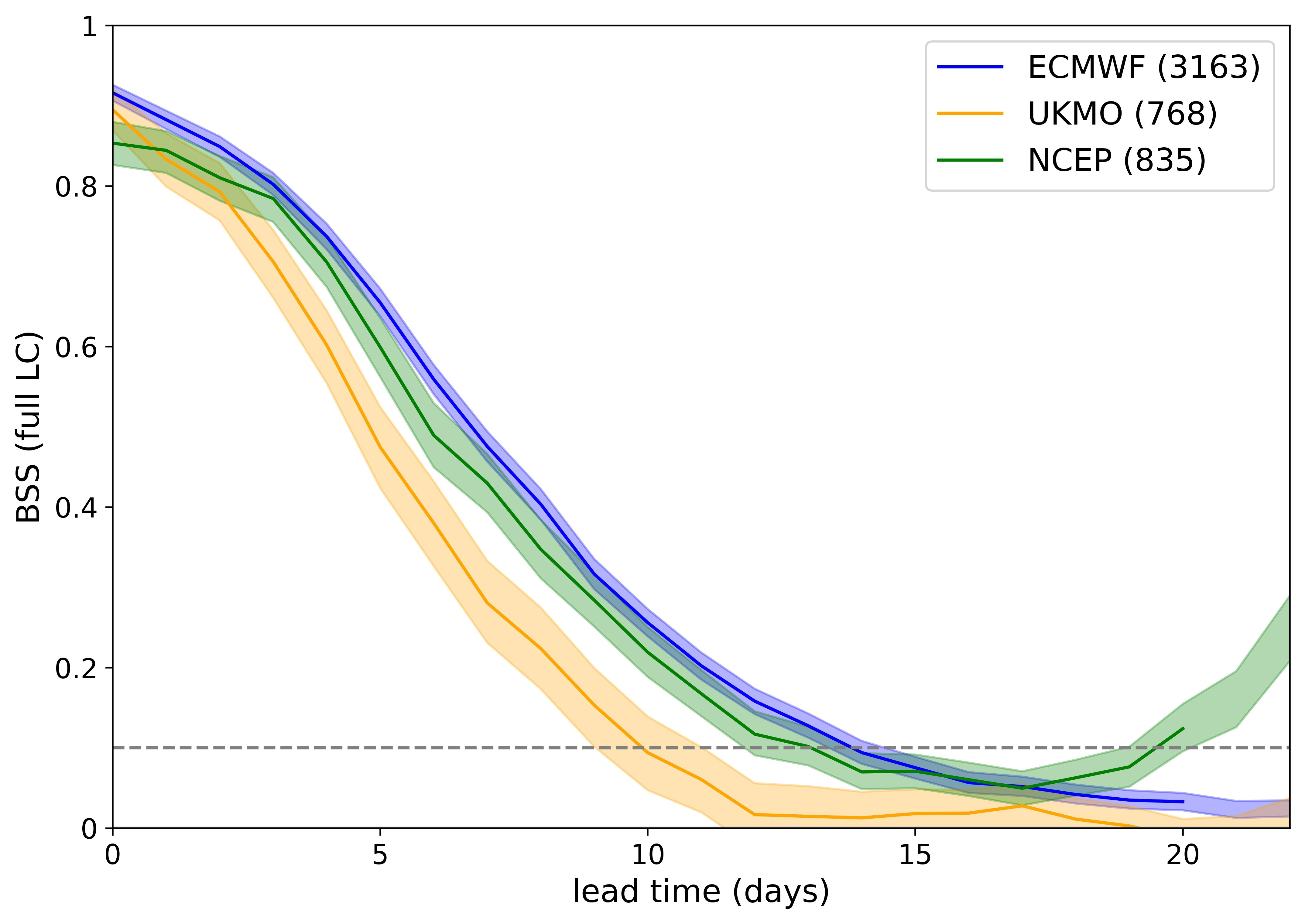First multi-model assessment of the sub-seasonal predictive skill for weather regimes
Accurate weather forecasts are essential for society and industry to plan their activities. Investment in computational infrastructure and the improvement of numerical weather models have allowed weather services to provide skillful weather forecasts up to 5 to 10 days ahead. Extending the horizon of skillful forecasts to longer time scales (so called sub-seasonal time scales) has become a topic of great interest in the weather community. Due to the chaotic nature of the atmosphere, accurate local and day-to-day weather predictions are not feasible on these longer scales yet. However, predicting larger-scale meteorological conditions aggregated over regions on weekly time scales is possible to some degree. These large-scale meteorological conditions at the sub-seasonal range can be depicted by weather regimes. They are large-scale weather patterns in the midlatitude atmosphere that persist for several days to weeks and modulate regional surface weather in characteristic ways. Accurate prediction of weather regimes by sub-seasonal models are then of high interest for numerous socio-economic sectors such as the energy industry, agriculture or tourism.
In a previous news article, the results of the evaluation of the performance of a numerical weather model in forecasting a set of seven Atlantic-European weather regimes weeks ahead was presented (LINK: https://www.imk-tro.kit.edu/english/11142.php). That study represented the first evaluation of model performance year-round, instead of one season only, and helped identify under which conditions sub-seasonal forecasts are skillful (so-called windows of forecast opportunity). Those conditions are, for instance, the status of the stratospheric polar vortex or convection in the tropics. However, the results of that study are limited to that particular model. A systematic analysis including models by other centres is needed to identify strengths and weaknesses of each model, and thus increase our confidence in the forecasts and their usefulness for decision-making.
In a new study from our research group, which is the result of a collaboration with colleagues from ETH Zürich and AXPO Solutions AG, who also funds the project, the prediction skill of three sub-seasonal forecast models is evaluated for those seven weather regimes. The study finds that predicting weather regimes performs better over using simple circulation variables. Another important finding is that regimes can be skillfully predicted up to about two weeks ahead, although this threshold depends on the model considered. Greenland Blocking tends to have the longest year-round skill horizon for all three models, especially in winter. Conversely, the skill is lowest for the European Blocking regime for all three models, followed by the Scandinavian Blocking. The study also shows that the models struggle to forecast flow situations that cannot be assigned to a weather regime (no regime situations). In addition, models have difficulties in discriminating between related regimes which can lead to misassignments in the predicted regime during flow situations in which related regimes manifest. Finally, the study documents how skill has evolved with the changes in numerical weather models. To do this, the three models used in the study were compared against an earlier version of the models. The results show that improving the way that models are initialized, as well as improvements to some of the components of the models, such as the dynamical core and the parametrization schemes, leads to better skill that extends up to 20 days.
The study summarizes part of the research done in our group under the project “Assessment of weather forecast performance with respect to weather regimes for better meteorological guidance in energy trading” funded by AXPO solutions AG. This project builds upon the interest in broadening the general understanding on specific details of surface weather variability due to weather regimes in the context of energy provision and demand. This study is the first multi-model assessment of year-round weather regimes in the Atlantic-European domain. It advances our understanding of the predictive skill for weather regimes, reveals strengths and weaknesses of each model, and increases our confidence in the forecasts and their usefulness for decision-making. The results obtained can help weather forecasters working at AXPO in their operational activities, and weather modelling centers in the development of new prediction models.

Marisol Osman / Remo Beerli / Christian Grams, Group Large-scale Dynamics and Predictability (http://www.imk-tro.kit.edu/7425.php) July 2023
References:
Osman, M., R. Beerli, D. Büeler, and C. M. Grams, 2023: Multi-model Assessment of Sub-seasonal Predictive Skill for Year-round Atlantic-European Weather Regimes. Quarterly Journal of the Royal Meteorological Society, in press, doi:10.1002/qj.4512.
